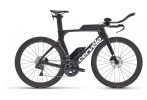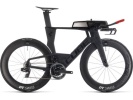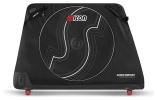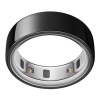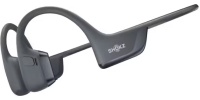Impact of Minimalist Shoes on Triathletes and Trail Runners' Performance
Par Sarah Publié le 08/10/2025 à 08h00 Temps de lecture : 3 minutes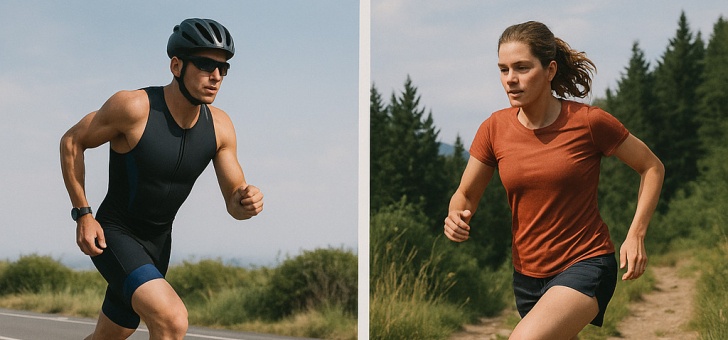 Crédit Image: AI Generated
Crédit Image: AI Generated
Understanding Minimalist Shoes
In recent years, minimalist shoes have gained traction among endurance athletes, particularly triathletes and trail runners. These shoes are designed with a low profile, allowing for a more natural foot movement and promoting a stronger connection between the foot and the ground. By reducing excess material and cushioning, they aim to create a more 'barefoot' running experience, enabling athletes to tap into their natural biomechanics.
Benefits of Minimalist Shoes for Endurance Athletes
Minimalist shoes offer a variety of benefits that can subtly enhance performance and endurance for triathletes and trail runners:
- Enhanced Flexibility: Minimalist shoes are often more flexible than traditional running shoes, which allows for a more natural range of motion. This flexibility can help runners respond better to unpredictable terrains, such as trails or varied surfaces.
- Improved Muscle Engagement: A study published in the Journal of Sports Sciences found that wearing minimalist shoes encouraged greater engagement of foot muscles, particularly in the intrinsic muscles that support the foot's structure and functionality.
- Stronger Footwear Dynamics: With less cushioning, athletes can experience better proprioception—the body’s ability to sense movement, action, and location. This improved awareness can lead to adjustments in stride and technique that enhance performance and reduce injury risk.
- Natural Stride Development: Transitioning to minimalist shoes can encourage a natural forefoot or midfoot strike, reducing the chances of overstriding, which is linked to injuries and poor running efficiency.
Performance Considerations for Triathletes
Triathletes often face unique challenges due to the demands of three distinct sports. Minimalist shoes can fit seamlessly into their training and competition regimens:
- Swimming: Although swimmers do not utilize footwear, transitioning to minimalist footwear during running and cycling can promote overall agility and body conditioning.
- Cycling: While cycling's mechanics differ, minimalist shoes can enhance foot stability and power transfer when out of the shoes.
- Running: Adapting to minimalist shoes during the running section of a triathlon can lead to improved breathing, stride dynamics, and the overall efficiency of movement.
Improving Endurance with Minimalist Footwear
One of the main advantages of minimalist shoes is their potential to improve endurance over long distances. Here's how:
- Reduced Fatigue: With less bulk, the shoes can help decrease muscular fatigue, allowing athletes to endure longer runs or rides without succumbing to exhaustion.
- Enhanced Stamina: As endurance builds, many athletes find that their overall speed and performance improve with continued use of minimalist footwear.
- Improved Recovery: A more natural foot strike can lessen the impact on joints, reducing soreness and facilitating faster recovery times for endurance athletes.
Adjusting to Minimalist Footwear
Transitioning to minimalist shoes requires a thoughtful approach to prevent injury:
- Start Slow: Begin with short distances and gradually increase volume over time to allow your foot and leg muscles to adapt.
- Focus on Form: Pay attention to your running mechanics. Aim for a midfoot strike and avoid excessive heel striking, which can lead to injury.
- Incorporate Strength Training: Strengthening foot and lower leg muscles through targeted exercises can aid in the transition process.
Challenges and Potential Risks
While minimalist shoes have numerous benefits, they may not be suitable for everyone:
- Injury Risk: Transitioning too quickly can increase the risk of stress fractures and injuries due to the drastic change in foot mechanics.
- Foot Type Considerations: Individuals with certain foot conditions or biomechanical imbalances may find that traditional running shoes provide better support.
- Surface Differences: Trail runners need to consider the terrain they frequently navigate; realistic grip and stability features should be evaluated when selecting minimalist shoes.
Choosing the Right Minimalist Shoes
With a variety of minimalist shoes on the market, selecting the right pair for your needs is crucial. Here are a few considerations:
- Fit: Ensure a snug fit without excessive tightness. The forefoot should have space to splay naturally.
- Drop: Look for shoes with a low heel-to-toe drop (4mm or less) to promote a more natural stride.
- Weight: Lighter shoes can enhance speed and endurance, making them suitable for racing and long-distance efforts.
Scientific Perspectives on Minimalist Footwear
Several studies have explored the effects of minimalist footwear on performance. For instance, a research article in the British Journal of Sports Medicine analyzed competitive runners transitioning to minimalist shoes and found significant improvements in running economy and performance metrics, especially after a proper adjustment period.
Integrating Minimalist Shoes into Your Training Routine
To maximize the benefits of minimalist shoes, consider the following tips for integration into your training routine:
- Mix Shoe Types: Utilize traditional shoes on recovery runs or intense workouts to give your feet a break while still reaping the endurance benefits of minimalist shoes.
- Listen to Your Body: Pay close attention to how your feet and legs feel; soreness could indicate the need to scale back.
- Regularly Reassess Your Shoes: As your mileage increases, ensure your shoes still meet your evolving needs and preferences.
Conclusion
Minimalist shoes hold great potential for enhancing the performance of triathletes and trail runners. Their benefits for endurance, stride, and overall biomechanics can lead to improved athletic outcomes. However, athletes should prioritize gradual adaptation and fit assessments to fully harness their advantages while minimizing the risk of injuries. Explore Urban Trail Running Benefits and Optimize Your Training to complement your journey into the world of minimalist footwear.
🧠 FAQ - Impact of Minimalist Shoes on Triathletes and Trail Runners' Performance
❓ What are minimalist shoes?
Minimalist shoes are designed to provide a natural feel while running, featuring a lower heel-to-toe drop and reduced cushioning.
❓ How do minimalist shoes affect endurance?
They enhance endurance by increasing foot muscle engagement, reducing fatigue, and improving overall running economy.
❓ Can I use minimalist shoes for triathlons?
Yes, they can be beneficial for the running segment of triathlons, contributing to improved technique and efficiency.
❓ Are there risks related to minimalist shoes?
Transitioning too quickly can cause injuries like stress fractures. It's essential to adapt gradually.
❓ How do I choose the right minimalist shoes?
Look for a snug fit, low drop, and lightweight design suitable for your running style and terrain.
❓ How can I fit minimalist shoes into my training?
Incorporate them gradually, mix them with traditional shoes, and listen to your body for signs of discomfort.
